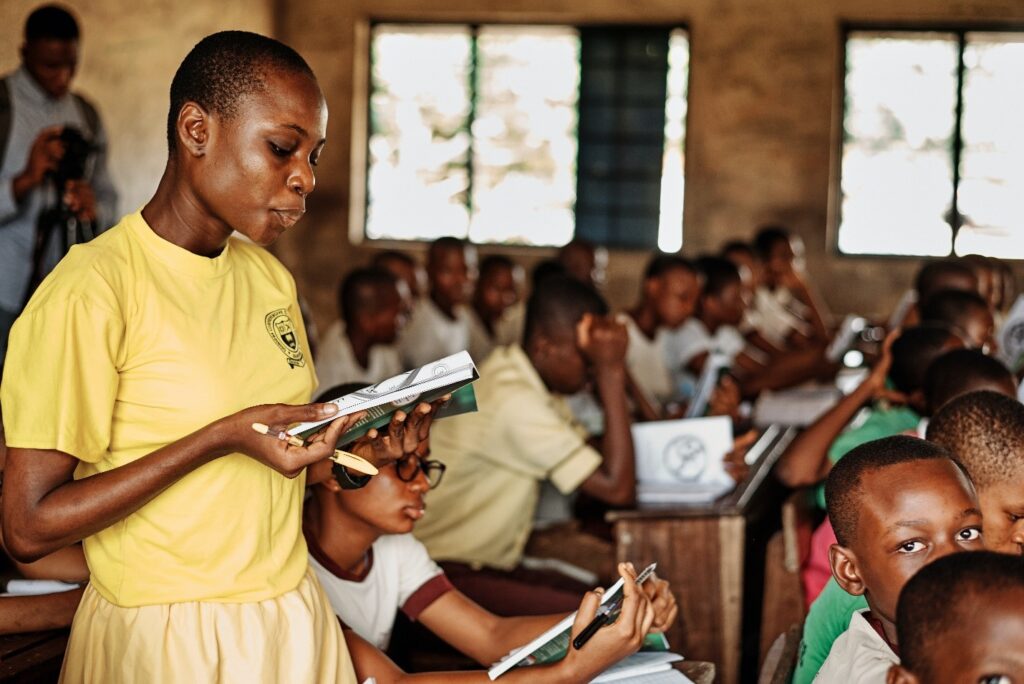For quite some time, the subject of school dress regulations has sparked global discussions, casting a significant influence over students’ daily experiences. In Nigeria, these regulations intricately weave into matters concerning body image and gender identity, significantly moulding how students perceive themselves and their roles in society.
How students view their bodies is significantly influenced by school dress restrictions. The imposition of Western-style uniforms in Nigeria, where prized indigenous wear displays rich heritage, can engender discomfort and a sense of alienation from one’s roots. Being forced to wear uniforms that go against their cultural standards can cause internal turmoil for many Nigerian students, especially when it comes to body image.

The pressure to follow these dress regulations can also foster unfavourable expectations of physical appeal. Under this influence, young people in Nigeria may struggle with self-esteem and, in extreme circumstances, develop body dysmorphia because of pressure to conform to particular Western beauty ideals.
Diversity thrives within Nigerian society, encompassing a spectrum of gender identities that extend well beyond conventional binaries. Ironically, school dress codes can inadvertently become the unwitting architects of stereotypes, obstructing the authentic expression of gender identity. Consider, for instance, how rigid gender-specific dress regulations may compel non-binary or gender-diverse students to assume roles discordant with their true selves, inducing feelings of distress and bewilderment.
Additionally, insisting on gender-specific uniforms can support detrimental gender norms. The message that females’ beauty matters more than their desire to learn may be amplified by strict clothing regulations. Boys, on the other hand, could experience limitations that prevent them from expressing themselves freely and exploring their unique style.

This discourse is further complicated by the intricate weaving of Nigeria’s cultural variety. A universal clothing code may unintentionally inhibit the lively expression of culture because different regions have their own distinctive traditional wear. This situation may foster a sense of alienation from one’s roots, ultimately igniting conflicts of cultural identity.
One may argue that allowing children the freedom to include aspects of their cultural garb into their school uniforms would be a more inclusive approach to school dress standards in Nigeria. Such a change will not only spark cultural pride but also promote a more accepting environment for a variety of gender identities.
It is crucial to have a more inclusive and culturally sensitive strategy to reduce the impact of school clothing restrictions on gender identity and body image in Nigeria. Institutions of higher learning should think about giving students more freedom to choose their clothing, given that it complies with reasonable guidelines. This method would enable pupils to express themselves honestly while still being aware of cultural sensitivities.

In addition, schools should aggressively promote inclusivity and body acceptance throughout their curriculum. Institutions may foster a culture of acceptance and enlightenment by fostering conversations on gender diversity and body image.
Within Nigerian education, the influence of school dress codes on body image and gender identity cuts deep, leaving an indelible mark. This intricate web, intricately woven with threads of cultural diversity, beckons for an artful and empathetic approach. As educational institutions in Nigeria embrace the symphony of cultural norms and the kaleidoscope of gender identities, they have the potential to cultivate an environment that thrives on inclusivity and basks in the warm embrace of acceptance. In this nurturing environment, students stand poised to blossom with self-assuredness, painting vibrant strokes of a more robust and authentic identity.
Sources
- https://thisisgendered.org/entry/dress-code/#:~:text=The%20impact%20of%20dress%20codes,important%20to%20students%20themselves%20too.
- https://amp.cnn.com/cnn/2017/05/30/health/school-dress-codes-body-shaming-girls-parenting/index.html
- https://arhsharbinger.com/23556/opinion/dress-codes-create-insecurities-negative-school-environments/#:~:text=This%20can%20make%20those%20dress,girls%20with%20more%20mature%20bodies.
- https://amp.theguardian.com/lifeandstyle/2015/sep/10/school-dress-codes-reinforce-the-message-that-womens-bodies-are-dangerous
- https://www.linkedin.com/pulse/psychology-fashion-how-clothing-choices-impact-mood-nidhi-tulsyan?utm_source=share&utm_medium=member_ios&utm_campaign=share_via





2 thoughts on “Ever Wondered How School Dress Codes Shape Students’ Self-image ? ”
This was an eye opening read. I like it👍
Really good topic 👍🏾